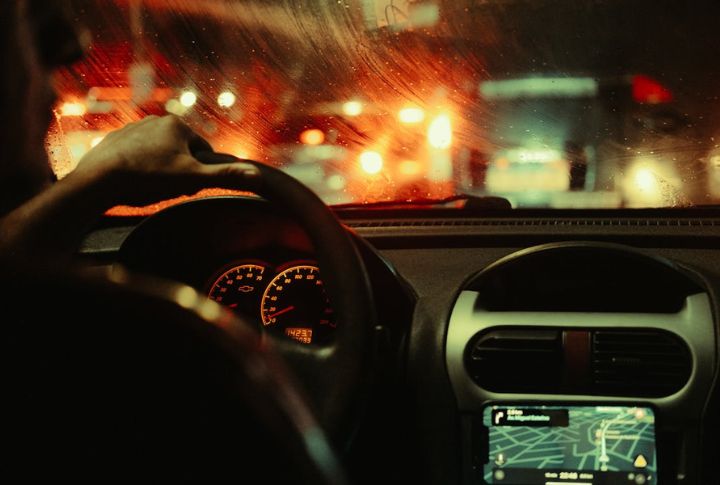
You’ve scrubbed with every cleaner you could find, swapped out the wiper blades, and even tried those viral DIY tricks. Still, the haze creeps back like it’s taunting you. At some point, you start to wonder if it’s even fixable. Spoiler: it probably is, but it’s less about what you’re using and more about how you’re cleaning.
To tackle the haze effectively, it helps to know what’s going wrong—and what actually works to clear it up for good.
What’s Causing That Film On Your Glass?
While interior residue plays a role in the hazy buildup, it’s far from the only factor. Grime kicked up from other vehicles can coat the outside, while smoke, condensation, and some cleaning products also quietly contribute from within.
It builds up slowly, even in a spotless vehicle, and often shows up as a greasy layer that catches the worst glare at sunrise or during night drives.
So, before grabbing another cleaner or cloth, it’s worth knowing what’s feeding the problem. The following are the common culprits causing the issue in the background:
Smoke, Oils, And Dirt
Everyday actions like smoking and the dust kicked up by entering and exiting leave microscopic oils on the glass that attract dust and hold moisture. Over time, they form a sticky coating that defies quick cleaning.
Reduce these habits or clean more often to limit buildup before it ruins visibility.
A Dirty Or Clogged Cabin Air Filter
When your ventilation system blows air through a dirty cabin filter, it sends more dust and debris onto your dashboard and straight onto the inside of your windshield. That fine grit settles fast, and if you go in with a wipe, you might even scratch the glass.
Replacing or refreshing the filter keeps the air cleaner and helps reduce that buildup.
Heater Core Leaks
If you notice a bluish haze on the inside of your windshield or catch a sweet, syrupy smell hanging in the cabin, there’s a good chance coolant is leaking from the heater core or a nearby hose.
That mist first fogs up the glass, and it also coats it with a sticky, chemical film that’s tough to remove and harmful to breathe. This bluish haze signals there’s a deeper issue under the hood.
So, before you grab the glass cleaner, have a certified mechanic inspect the system. Fixing the leak first prevents the film from coming right back and protects both your visibility and your health.
Why Does It Build Faster In Hot Weather?
When your car sits under the sun, interior surfaces like the dashboard, seats, and carpets heat up quickly, especially in warmer months. As they get hotter, they release more chemical vapors through a process known as off-gassing, which means materials inside the car release gases as they warm up. These vapors float up and cling to the inside of the windshield, forming that hazy film faster than usual. And over time, repeated exposure to this heat speeds up the buildup.
The first preventative measure is to park in the shade. Secondly, crack the windows slightly or use a reflective sunshade to help minimize interior temperatures.
By keeping the cabin cooler, you reduce how much material is released into the air and slow down how fast that film forms.
Tools And Methods That Actually Work
The right cleaning method makes all the difference when tackling that stubborn windshield film. For the materials, you need:
- Two dry microfiber cloths
- Ammonia-free glass cleaner or a 50/50 vinegar-water mix
- Diluted isopropyl alcohol for tougher stains
Start with a dry microfiber cloth to gently remove loose dust and grime, as this helps prevent scratching. Next, use a separate cloth to apply ammonia-free glass cleaner or a 50/50 vinegar-water mix. Spray cleaner onto the cloth—not the glass—to avoid drips and use small circles to lift film without streaks.
For tougher spots that resist regular cleaners, follow up with a pass of diluted isopropyl alcohol (a common rubbing alcohol found in stores). Finish by drying the surface with a clean microfiber to leave the glass clear and glare-free.
Smart Habits That Stop It from Coming Back
Preventing windshield haze requires addressing its true causes. Whether it’s off-gassing, smoke, heat, or a mechanical problem, each issue needs a tailored solution. Preventing windshield haze means tackling the root causes consistently. Here’s a quick checklist to keep things clear:
- Wipe down the interior glass weekly using ammonia-free cleaner.
- Keep windows cracked slightly when parked to reduce off-gassing buildup.
- Avoid smoking inside the car.
- Replace your cabin air filter regularly.
- Park in shaded or well-ventilated areas to limit heat and moisture accumulation.
- Don’t leave plastic-based items (like air fresheners) on the dash for long periods.
Stick with these, and the haze won’t stand a chance.

